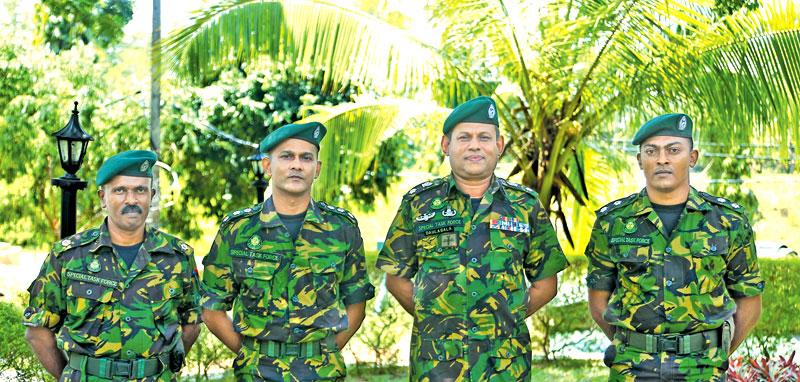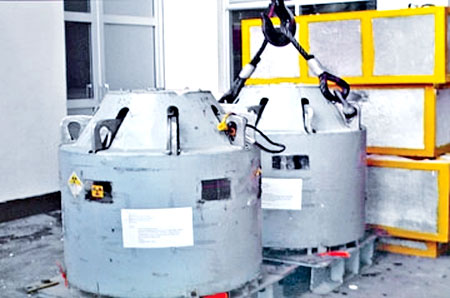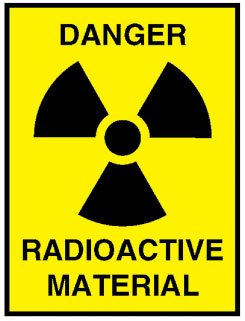
Security and counter terrorism continue to challenge the world, as law enforcement agencies take on new threats in rapidly changing theaters of engagement. The criminal mind infused with hostile intent keeps moving ahead with innovative and discreet methods of killing and spreading panic. Likewise, law enforcement updates their counter strategies. Over the past two decades global acts of terror involved various types of explosions and suicide attacks. But, in the recent past security experts face a somewhat invisible predator.
 A silent killing mechanism that can stealthily unleash a greater number of casualties- this is the domain of CBRNE, which denotes Chemical, Biological, Radioactive, Nuclear and Explosives. It is a replacement of the cold war term NBC (Nuclear, Biological and Chemical). The CBR component of this threat can be coupled with explosive capability and poses a great danger.
A silent killing mechanism that can stealthily unleash a greater number of casualties- this is the domain of CBRNE, which denotes Chemical, Biological, Radioactive, Nuclear and Explosives. It is a replacement of the cold war term NBC (Nuclear, Biological and Chemical). The CBR component of this threat can be coupled with explosive capability and poses a great danger.
In the intense but prolonged battle of Vietnam the Americans used Agent Orange to subdue their enemies. Agent Orange, a defoliant chemical was a mixture of two phenonyl herbicides.
We would all remember the deadly Sarine gas attack in Matsumoto in 1994 which left 8 dead and 200 non fatal casualties. As these incidents got the attention of many nations it resulted in the formation of the OPCW- Organization for the Prohibition of Chemical Weapons in Paris.
There was an incident in Belgium where CCM137 was used and that land mass has been sealed off. It is noteworthy to mention that the radioactive material warning symbol was designed in 1946 at a radiation research laboratory in Berkley, USA.
The need to form an incident response team to mitigate CBRNE was realized by former IGP Mahinda Balasooriya, who was also a former Commandant of the STF. In 2011, a few officers were handpicked for this task.
The team leader was ASP Athula Daulagala (MSc), who is presently Superintendent of Police and serves as Director Training of the STF Academy at Katukurunda. SP Daulagala also has the distinction of being the pioneer of the Bomb Disposal Squad having received his training in Israel. I was able to meet him along with the three officers of the STF –CBRNE response team which include Chief Inspector Gihan Gunaratne, Inspector KGC Nadinjaya and Sub Inspector PRSPK Bandara, who has also done a tour of duty with the UN.
In the Sri Lankan scenario thus far the use of radiological substance has been purely for commercial and medical use (radiation treatment for cancer patients). These activities are strictly monitored by the Atomic Energy Authority and IAEA standards (International Atomic Energy Agency). The STF takes a lead role in providing for the security of these movements. According to the World Institute for Nuclear Security (WINS) an amazing 20 million consignments of radioactive material take place around the world each year. These include separated plutonium, enriched uranium and reactor fuels.
Worldwide, there are 450 operating reactors which produce 12% of the world’s electricity. By 2023 the CBRN products would reach almost 13 billion dollars. The safe transport of CBRN material always requires threat assessment and risk information. The Counter Terrorism and Maritime Security Directorate of Interpol highlight an incident in December 2013 when a Category 1 Cobalt 60 source was stolen in Mexico. This was followed by 2 more thefts of radioactive materials in July 2014.
 Dynamic SP Daulugala showed me a hand held PDR (personal radiation detector) which looks similar to a pager. This device can quickly pick up traces of radioactive material and also indicate its active strength. This would allow the incident response commander to guide his team on their response, while maintaining safety.
Dynamic SP Daulugala showed me a hand held PDR (personal radiation detector) which looks similar to a pager. This device can quickly pick up traces of radioactive material and also indicate its active strength. This would allow the incident response commander to guide his team on their response, while maintaining safety.
The teams use the tactics of detection, delay and response. He further explains that when they enter the scene of an explosion for PBI (Post Blast Investigation) these devises are used to check if any CBR elements have been used to contaminate the area. Using a CBR device cannot be done by an ordinary criminal. It requires one to have a high level of scientific input and requires a terror network to organize, safely transport and carry out a violent but silent attack. I was made to understand that biological substances spread the fastest and radiological substances leave a long term effect on a community. All points of entry into our island (ports and airports) have been fixed with high tech scanners to detect any trace of CBR substances. Another avenue of stealth attack can be by a drone. The STF assures that they can quickly jam an airborne drone by using high frequency waves, disabling its flight.
In addition to this they have trained as first responders to an incident that may involve chemical, biological and radiological material. IP Nadinjaya briefed me on the crisis management aspect. After the team arrives at the given site they check for any human casualties and survivors. Often those exposed to CBR will display symptoms of tearing red eyes, vomiting, heavy breathing, burnt clothing and skin.
Some could even be unconscious. The team would begin the process of decontamination using water. Such a crime scene always puts the first responders at a greater level of risk. Over the past few years, the Special Task Force has sharpened their operational skills and can respond from almost 59 locations to control and neutralize any threat of CBRNE.
